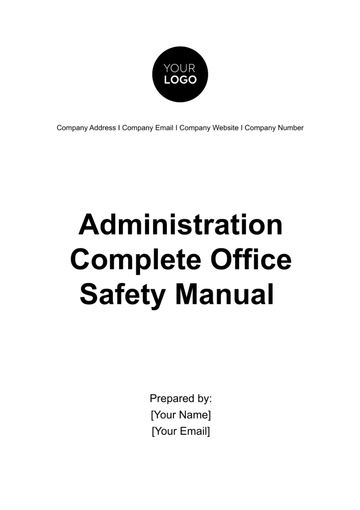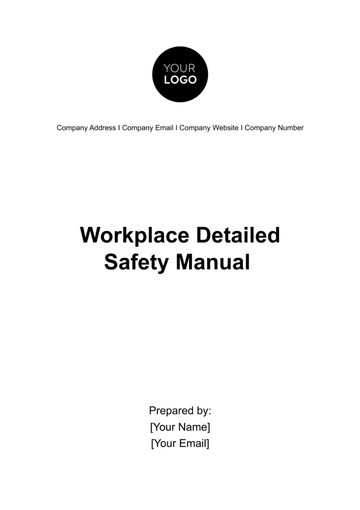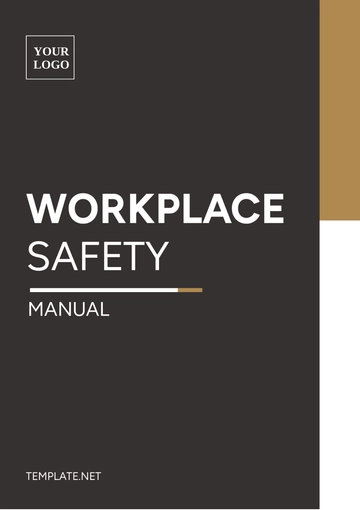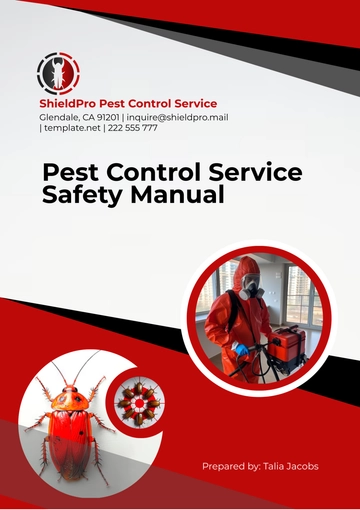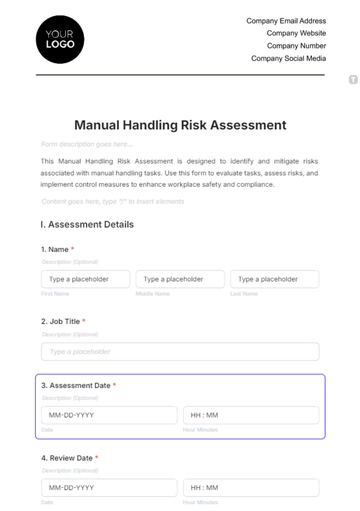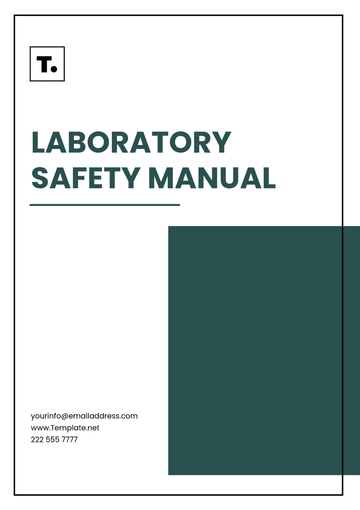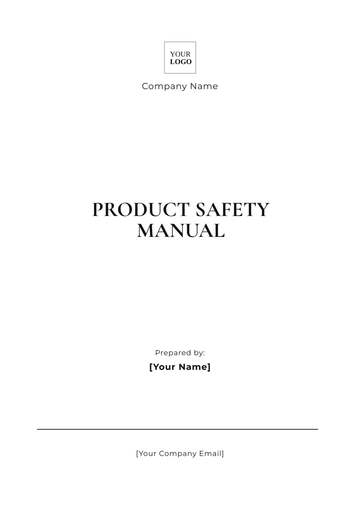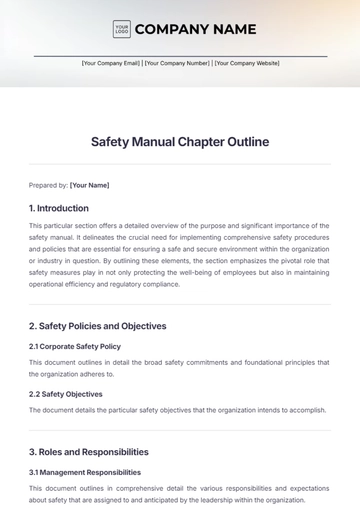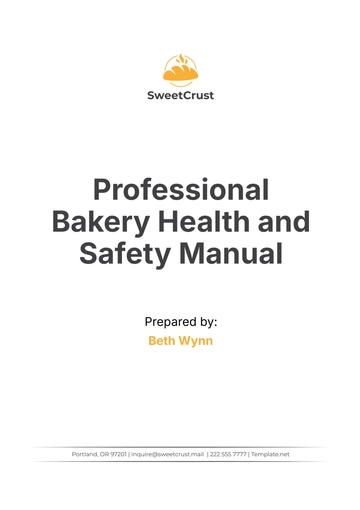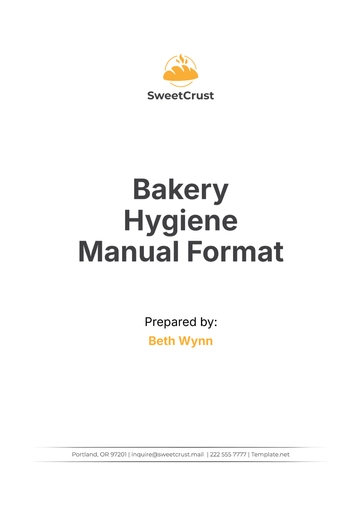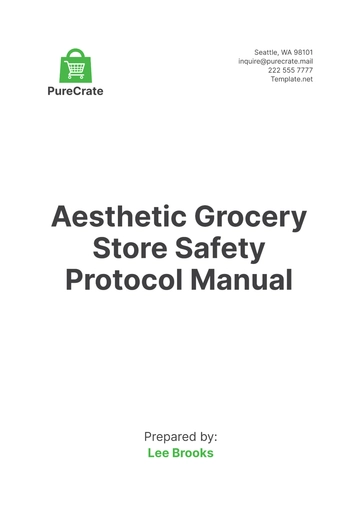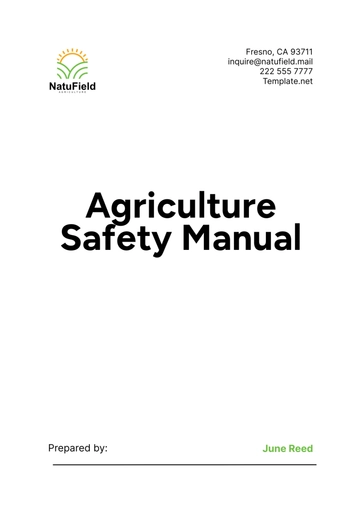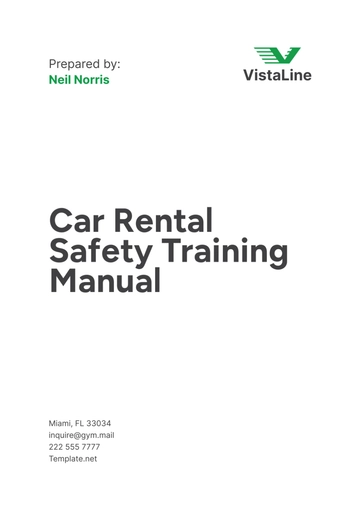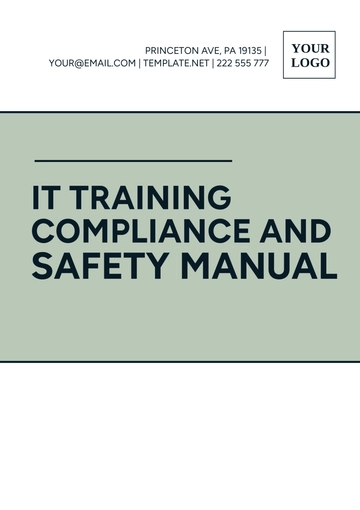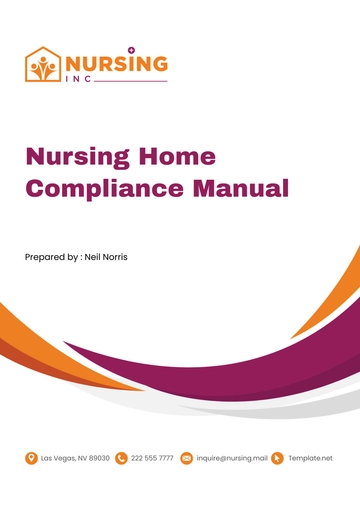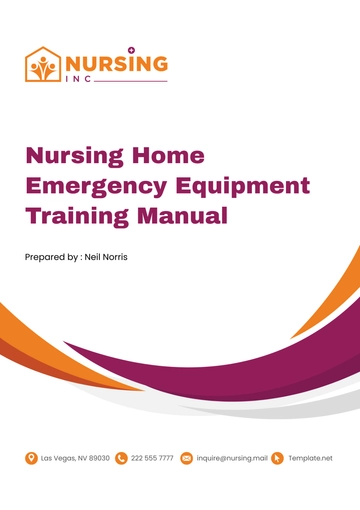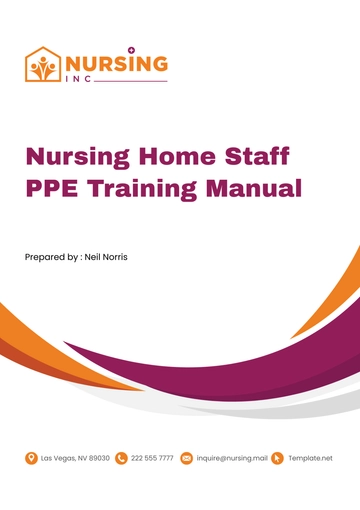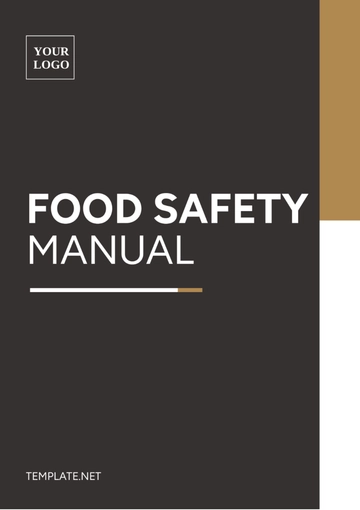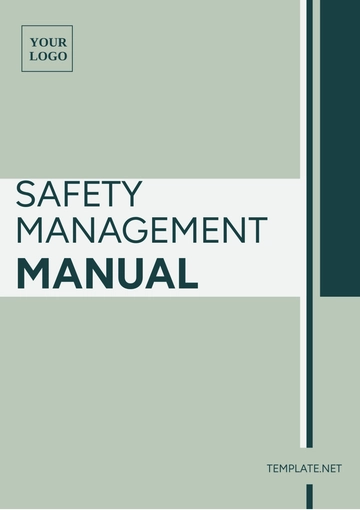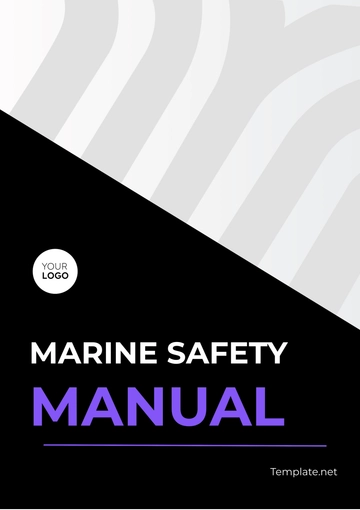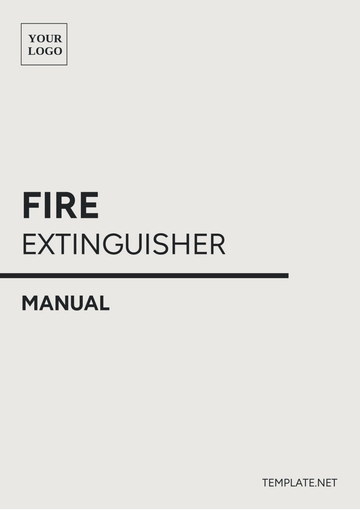Free Workplace Safety Manual
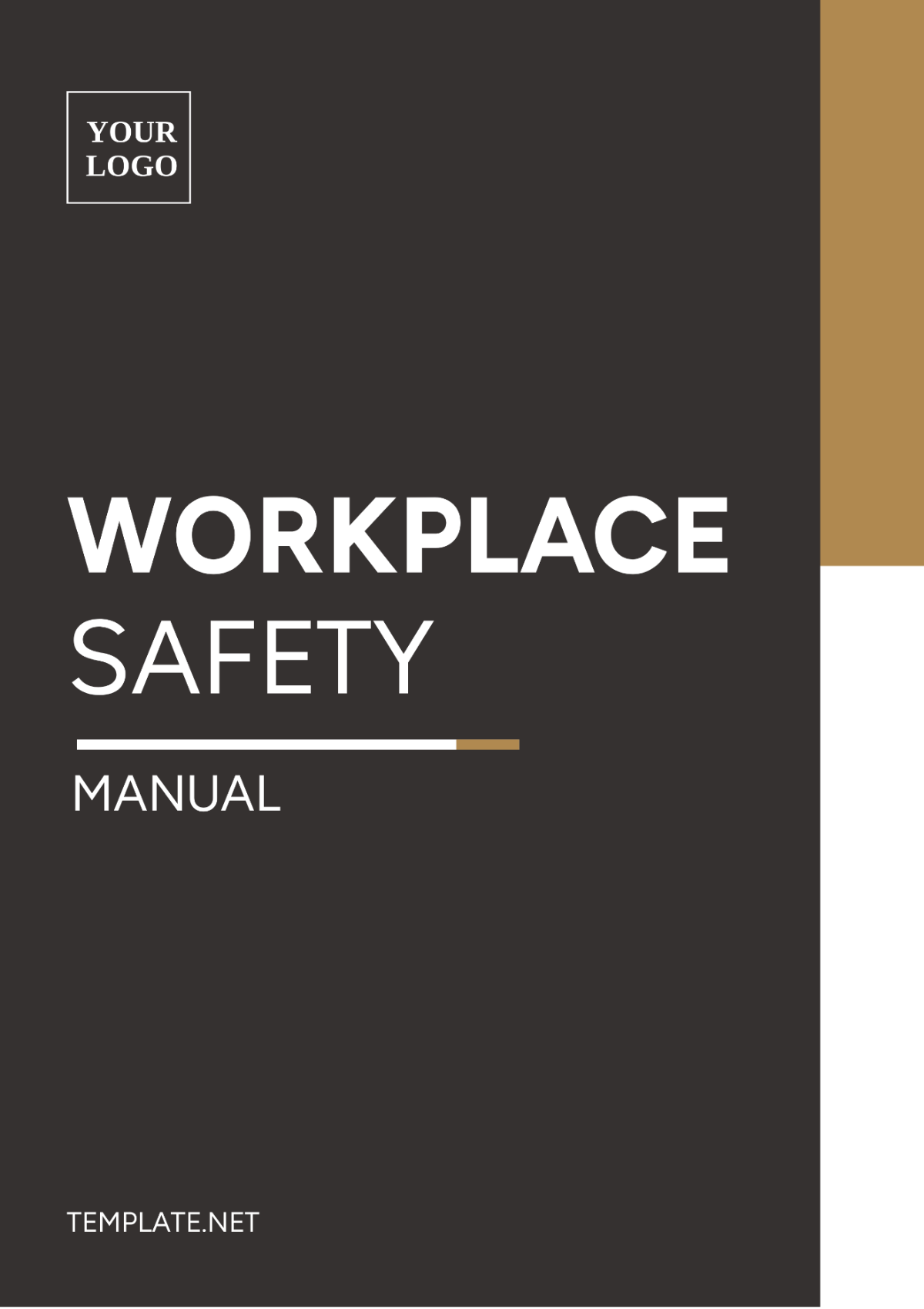
Name | [YOUR NAME] |
|---|---|
Company | [YOUR COMPANY NAME] |
Department | [YOUR DEPARTMENT] |
Date | [DATE] |
I. Introduction
The [YOUR COMPANY NAME] Workplace Safety Manual is designed to ensure the safety and well-being of all employees by providing comprehensive guidelines and procedures to mitigate workplace hazards and promote a culture of safety. It is the responsibility of every employee within [YOUR COMPANY NAME] to familiarize themselves with the contents of this manual and adhere to the outlined safety protocols.
A. Purpose
The primary purpose of this manual is to establish [YOUR COMPANY NAME]'s commitment to providing a safe working environment for all employees. By implementing the policies and procedures outlined in this manual, we aim to minimize the risk of workplace accidents and injuries, protect the health and well-being of employees, and maintain compliance with regulatory standards.
B. Scope
This manual applies to all employees, contractors, visitors, and anyone else within the premises of [YOUR COMPANY NAME]. It covers various aspects of workplace safety, including but not limited to hazard identification and control, emergency procedures, personal protective equipment (PPE) requirements, and employee responsibilities.
II. Safety Responsibilities
Safety is the responsibility of every individual within [YOUR COMPANY NAME]. By understanding and fulfilling their respective roles and responsibilities, employees contribute to maintaining a safe working environment for themselves and their colleagues.
A. Management Responsibilities
[YOUR COMPANY NAME] management is committed to prioritizing workplace safety and providing the necessary resources to support a culture of safety. Management responsibilities include:
Providing leadership and support for safety initiatives
Ensuring compliance with safety regulations and standards
Allocating resources for safety training and equipment
Investigating and addressing safety concerns promptly
B. Employee Responsibilities
Employees play a crucial role in maintaining workplace safety by following established procedures, reporting hazards, and actively participating in safety programs. Employee responsibilities include:
Familiarizing themselves with the contents of the safety manual
Adhering to safety protocols and procedures
Reporting unsafe conditions or behaviors to management
Participating in safety training and exercises
III. Hazard Identification and Control
A. Hazard Assessment
Identifying and assessing workplace hazards is essential for preventing accidents and injuries. [YOUR COMPANY NAME] conducts regular hazard assessments to identify potential risks and implement control measures to mitigate them. Employees are encouraged to report any hazards they encounter to ensure prompt resolution.
B. Hazard Control Measures
Once hazards are identified, appropriate control measures must be implemented to minimize the risk of harm. Control measures may include engineering controls, administrative controls, and the use of personal protective equipment (PPE). Employees are required to follow all prescribed control measures to maintain a safe working environment.
IV. Emergency Procedures
A. Emergency Response Team
[YOUR COMPANY NAME] maintains an emergency response team trained to respond effectively to various emergencies, including fires, medical incidents, and natural disasters. The team is responsible for coordinating emergency responses, evacuations, and providing first aid when necessary.
B. Evacuation Procedures
In the event of an emergency requiring evacuation, all employees must follow established evacuation procedures. These procedures include identifying evacuation routes, assembling at designated assembly points, and assisting others as needed. Regular evacuation drills are conducted to ensure preparedness.
V. Personal Protective Equipment (PPE)
A. PPE Selection and Use
[YOUR COMPANY NAME] provides appropriate PPE to employees based on the hazards present in their work environment. It is essential for employees to wear and properly use PPE as instructed to protect themselves from workplace hazards. Training on PPE selection, use, and maintenance is provided to all employees.
B. PPE Maintenance and Inspection
Employees are responsible for inspecting and maintaining their assigned PPE to ensure it remains in good condition and provides adequate protection. Any damaged or malfunctioning PPE must be reported immediately and replaced as necessary to maintain effectiveness.
VI. Training and Education
A. Safety Training Programs
[YOUR COMPANY NAME] offers comprehensive safety training programs to all employees to ensure they are equipped with the knowledge and skills necessary to perform their jobs safely. Training topics include hazard recognition, emergency procedures, PPE usage, and specific safety protocols relevant to each employee's job duties.
B. Continuous Education
Safety is an ongoing process, and [YOUR COMPANY NAME] is committed to providing continuous education and training opportunities to employees. Regular refresher courses, toolbox talks, and safety meetings are conducted to reinforce safety principles, address emerging hazards, and promote a culture of safety awareness.
VII. Incident Reporting and Investigation
A. Reporting Procedures
Employees are encouraged to report all workplace incidents, near misses, and hazards promptly to their supervisor or designated safety personnel. Reporting incidents allows for timely investigation and corrective action to prevent similar incidents from occurring in the future.
B. Incident Investigation
[YOUR COMPANY NAME] conducts thorough investigations of all reported incidents to determine root causes and implement corrective measures. Investigations are conducted in a timely manner, and findings are communicated to all relevant parties to prevent recurrence and improve safety practices.
VIII. Compliance and Regulatory Requirements
A. Regulatory Compliance
[YOUR COMPANY NAME] is committed to complying with all applicable safety regulations and standards set forth by regulatory agencies. Regular audits and inspections are conducted to assess compliance and identify areas for improvement.
B. Safety Policies and Procedures
[YOUR COMPANY NAME] establishes and maintains safety policies and procedures in accordance with regulatory requirements and industry best practices. These policies and procedures are regularly reviewed and updated to reflect changes in regulations and advancements in safety technology.
IX. Safety Communication and Promotion
A. Safety Communication Channels
Effective communication is essential for promoting a culture of safety within [YOUR COMPANY NAME]. Various channels, such as safety meetings, newsletters, bulletin boards, and digital platforms, are utilized to disseminate safety-related information, updates, and reminders to employees.
B. Safety Promotion Initiatives
[YOUR COMPANY NAME] actively promotes safety through various initiatives and campaigns aimed at raising awareness, recognizing safety achievements, and encouraging employee participation in safety-related activities. Employee engagement and feedback are valued to continually improve safety initiatives.
X. Contractor Safety Management
A. Contractor Safety Requirements
Contractors working on behalf of [YOUR COMPANY NAME] are required to comply with all applicable safety policies and procedures. Before commencing work, contractors must demonstrate competency in safety practices and provide evidence of appropriate insurance coverage.
B. Contractor Safety Oversight
[YOUR COMPANY NAME] provides oversight of contractor safety by conducting pre-job safety assessments, monitoring contractor activities, and ensuring adherence to safety standards throughout the duration of the project. Collaboration between [YOUR COMPANY NAME] and contractors is essential for maintaining a safe working environment for all parties involved.
XI. Safety Performance Evaluation
A. Safety Metrics and Indicators
[YOUR COMPANY NAME] tracks safety performance through various metrics and indicators, such as injury rates, near-miss reports, and safety inspections. Analyzing safety data allows for the identification of trends, areas for improvement, and the implementation of targeted safety initiatives.
B. Continuous Improvement
Safety performance evaluation serves as a basis for continuous improvement efforts within [YOUR COMPANY NAME]. Regular review of safety metrics, feedback from employees, and lessons learned from incidents are utilized to enhance safety programs and processes.
XII. Conclusion
In conclusion, the [YOUR COMPANY NAME] Workplace Safety Manual serves as a vital tool for ensuring the safety and well-being of all employees. By adhering to its guidelines, we collectively contribute to a safer work environment. We're committed to safety, striving to upgrade our safety culture. Safety is collective responsibility, and together we prevent accidents and prioritize health. Let's remain alert, communicate well, and engage in safety measures to maintain workplace safety. Thanks for ensuring a safe, healthy workplace.
- 100% Customizable, free editor
- Access 1 Million+ Templates, photo’s & graphics
- Download or share as a template
- Click and replace photos, graphics, text, backgrounds
- Resize, crop, AI write & more
- Access advanced editor
Discover the ultimate solution for workplace safety with Template.net's Workplace Safety Manual Template. Crafted to ensure compliance and promote a secure environment, this editable and customizable template is your guide to comprehensive safety protocols. Seamlessly edit in our Ai Editor Tool for effortless customization. Safety made simple.

